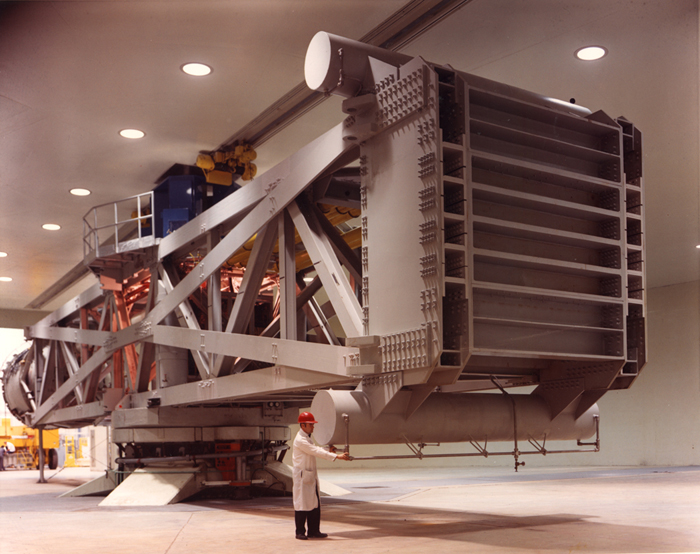Space History Photo: Launch Phase Simulator at Goddard Space Flight Center

In this historical photo from the U.S. space agency, Goddard's Launch Phase Simulator or High-Capacity Centrifuge simulates vibration, G-forces and changing pressures that a spacecraft would encounter during launch and landing. To perform a test, which typically lasts one day, technicians place spacecraft components and even entire satellites in either the simulator's cylindrical test chamber (at the far left in this photo) or on its test platform at the other end (it was not installed when this photo was taken).
Powered by two 1,250- horsepower motors, the facility then spins at up to 38.3 revolutions per minute to simulate a 30-g environment. (Most people experience about 2-g when they ride on a roller coaster.) Engineers monitor test results from an adjacent control room.
Each weekday, SPACE.com looks back at the history of spaceflight through photos (archive).
Get the Space.com Newsletter
Breaking space news, the latest updates on rocket launches, skywatching events and more!
Join our Space Forums to keep talking space on the latest missions, night sky and more! And if you have a news tip, correction or comment, let us know at: community@space.com.

The National Aeronautics and Space Administration (NASA) is the U.S. government agency in charge of the civilian space program as well as aeronautics and aerospace research. Founded in 1958, NASA is a civilian space agency aimed at exploring the universe with space telescopes, satellites, robotic spacecraft, astronauts and more. The space agency has 10 major centers based across the U.S. and launches robotic and crewed missions from the Kennedy Space Center in Cape Canaveral Florida. It's astronaut corps is based at the Johnson Space Center in Houston. To follow NASA's latest mission, follow the space agency on Twitter or any other social channel, of visit: nasa.gov.









